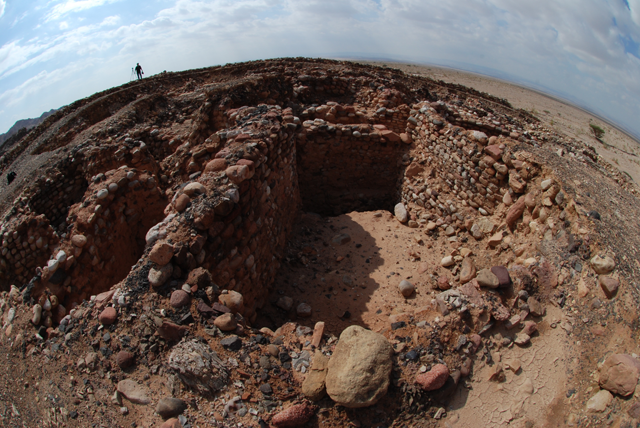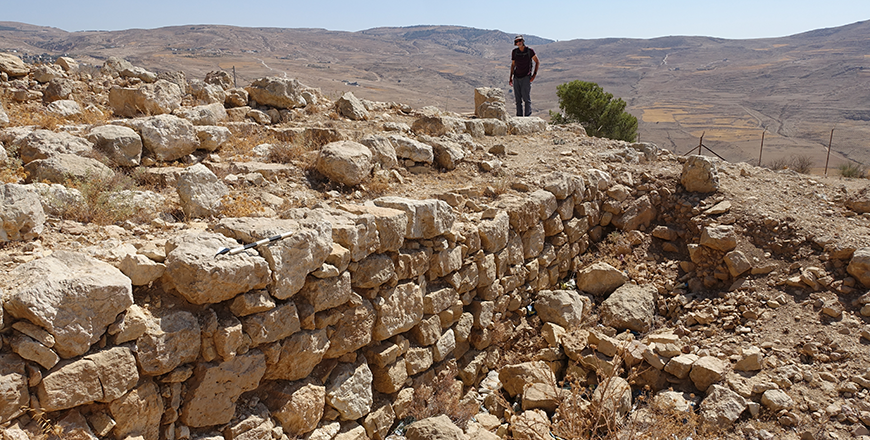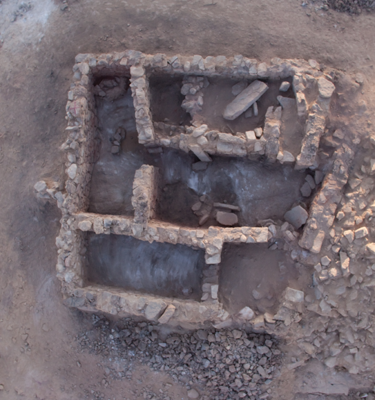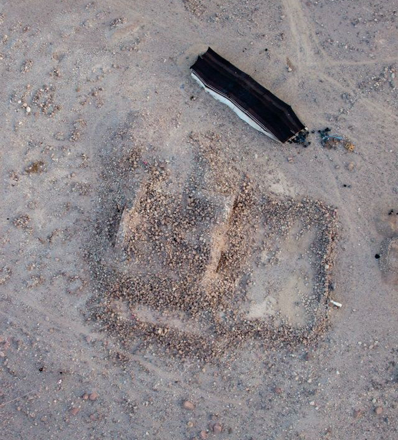You are here
Wadi Faynan deserves UNESCO World Heritage tag, says American archaeologist
By Saeb Rawashdeh - Aug 31,2023 - Last updated at Aug 31,2023

Early Neolithic site in Faynan copper ore district that first exploited ore to make beads before advent of copper production (Photo courtesy of Thomas Levy)
AMMAN — Wadi Faynan, located 250 kilometres southwest of Amman, was well known in ancient times for its copper ore.
“The earliest evidence for copper exploitation in Wadi Faynan is at the end of the Pre-Pottery Neolithic C [PPN] period, around 7,200 BC to 6,250 BC, when Faynan copper ore was fashioned into beads and also crushed into a colour pigment used to decorate some of the beautiful PPNC plaster statues found at ‘Ain Ghazal near Amman that are now on display at The Jordan Museum,” American Professor Thomas Levy said.
He added that scholars do not know exactly how the beads and ore were traded those thousands of years ago.
Levy’s expedition to Wadi Faynan, conducted in collaboration with Jordanian archaeologist Mohammad Najjar, was among the first in the southern Levant to fully embrace digitised recording methods.
“I began surveying and excavating in Wadi Faynan in 1997… I was anxious to work in Faynan to understand the complete early metal production system, let’s call it the ‘metal revolution’,” Levy said.
Furthermore, Levy and Najjar’s team carried out large-scale excavations there in 1999 and 2000, and discovered thousands of casting mould fragments and complete moulds for making ingots, axes, adzes and pins.
“Our studies show the copper was traded throughout the southern Levant with Egypt being one of the trade destinations,” Levysaid, adding that in the following Iron Age (1200 - 586 BC) Faynan witnesses the period when the most copper was mined, smelted and traded - even on a scale larger than the Roman period.
“This is the Biblical period. In the previous Late Bronze Age [ca. 1550 - 1200 BC], the island of Cyprus was the main producer of copper in the eastern Mediterranean,” Levy noted. “However, around 1200 BC, the civilisations of the eastern Mediterranean [the Mycenean in Greece, the Hittite in Anatolia/Turkey, and New Kingdom Egypt] collapsed. We don’t know precisely why–climate change, pandemics, poor leadership, warfare–does this sound familiar today? In any case, copper production in Cyprus was disrupted and the power vacuum left after the civilisational Late Bronze Age collapse, gave small groups like the Philistines, Israelites, Moabites, Edomites, Midianites and Phoenicians the opportunity to form numerous small kingdoms,” Levy said.
In the Faynan region, this gave the Edomites the opportunity to become a complex society whose Iron Age economy was fuelled by copper production, Levy stressed, adding that the largest site in Faynan was Khirbaten-Nahas (KEN: Arabic for the Ruin of Copper).
“We also excavated the only Iron Age cemetery in southern Jordan–Wadi Fidan 40 dating to the 10th century BC…These sites and the Faynan district are Jordan’s treasure and heritage,” Levy concluded, highlighting that the entire Faynan district is one of the world’s largest and best preserved ancient mining and metallurgy districts.
“It should be preserved as a UNESCO World Heritage site.”
Related Articles
AMMAN — The scholar Piotr Bienkowski studied archaeology at Liverpool University (BA and PhD) before he got involved in Jordanian Iron Age s
AMMAN — Wadi Faynan was an ancient metallurgical centre that exported copper ore on the Mediterranean.
AMMAN — The Edom Lowlands Regional Archaeology Project (ELRAP), directed by Thomas E.



















